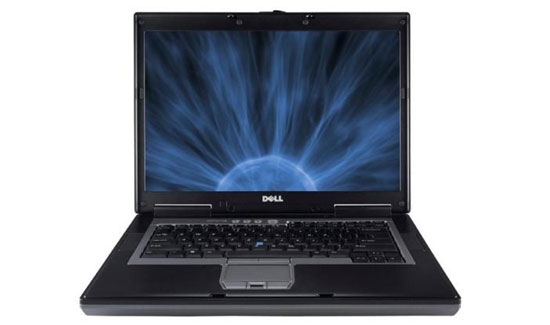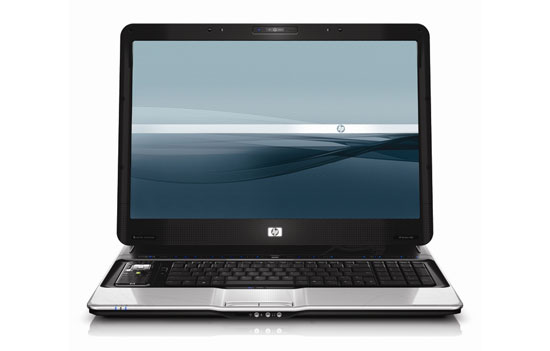Midrange Laptops
Depending on what you want out of a laptop, the midrange category is where all the options really become available. It's possible to get a 12.1" laptop for around $1000, but if you'd like to upgrade some of the areas - i.e. get a high capacity battery and an extended warranty with accident protection - and you'll definitely be closer to $1500. Getting a truly capable gaming platform also becomes possible when you spend $1500, and several brands that tend to be a bit more expensive become viable without cutting important features.
Extended battery life (i.e. five hours or more) is one feature that you might want to consider in a $1500 laptop. You can get there in one of two ways: either get a 14.1" (or larger) laptop and a 9-cell or 12-cell battery, or else pick up one of many 12.1" laptops that come with a 6-cell battery and LED backlighting. Keep in mind that integrated graphics tend to go hand in hand with longer battery life, although the lower end discrete graphics options (HD 2300 and GeForce 8400M) aren't that power hungry. Also remember that larger displays inherently consume more power because of the bigger backlights they include.

The net result is that while it's possible to get reasonable battery life out of a 15.4" or 17" notebook, you end up with something very heavy and bulky. A 12-cell 130 WHr battery can provide four hours of mobility on a 17" notebook that uses ~33W of power; you can get the same four hours of battery life with a 14.1" notebook and a 9-cell 77 WHr battery if the laptop uses ~20W, or a 12.1" laptop with a 6-cell 50 WHr battery if the laptop uses ~13W. So your choices might be a 10 pound 17", a 7 pound 14.1", or a 4 pound 12.1". Those aren't just random numbers we're putting up; all of these options exist if you look around a bit (give or take); if you're serious about mobility and battery life, it's a safe bet that toting a 12.1" laptop is a lot more attractive than lugging around a 17" brick.
While we're on the subject of 12.1" laptops, small tablet PCs also fall into the $1500~$1800 price range. Some people really like the tablet interface and others don't; we think it's more of a convenience feature rather than a required option. Regardless, there are a lot of tablet laptops to choose from: Toshiba's Portege line, the Lenovo ThinkPad X61 Tablet, HP Compaq 2710p (we'd stick with the HP tx2500z, honestly), and the AVADirect Clevo TN121R to name a few. Most ship with a 6-cell battery that should provide at least four hours of freedom from wires.

Mobile workstations are another category of laptop where prices start in the $1400 range. Let's be clear on this: no laptop out right now is going to match the performance of a top-end desktop workstation; in fact, it won't even come close, as it's relatively easy to get a quad-core 3.0GHz desktop and difficult to impossible to get a laptop up to that level. However, higher-end dual-core mobile CPUs are plenty fast these days, and the T9300 isn't all that expensive. Dell's Precision M2300 as an example with a T9300, WXGA+ LCD, 160GB 7200RPM HDD, 2GB RAM, and NVIDIA Quadro FX 360M will run about $1500 - including a 3-year warranty.
Given what we said on the previous page about graphics, we're now in a position to discuss gaming laptops. While it's certainly possible to run games on an 8600M GT/9500M GS or HD 2600, we can't stress enough how much better the experience will be with an 8800M GTS or GTX. Most of these gaming laptops will be out of reach of a midrange budget, but there's one major exception: Gateway's P-6831 FX priced at $1300. The price and performance offered by this Gateway was so much better than anything else that we couldn't help but give it our Gold Editors' Choice award. There's only one small problem: the P-6831 has been discontinued. The good news is that the replacement is the P-6860, which is the same as the P-6831 with a few minor upgrades. Memory has been increased to 4GB, the OS is now Vista Home Premium 64-bit, the CPU is the T5550 instead of the T5450, and the hard drive is a 320GB 5400 RPM model. The only trick now is actually finding one in stock, and we understand the P-6860 is scheduled to be replaced in the future by another slightly upgraded model. Alternately, grab the P-173FX from the Gateway site for $1500; it the same as the P-6860 but with a T7500 CPU and a 200GB 7200RPM drive. Battery life is a weak point, but then that's practically a give with gaming notebooks.

The upgraded Acer Aspire 6920 is another larger midrange offering, but where the Gateway we just discussed focuses on gaming, Acer clearly targets the multimedia enthusiast. The 6920 (model 6920-6422) includes a 9500M GS graphics for reasonable gaming, but the real highlight is the Blu-ray drive and 16" 1920x1080 (1080p) display. The chassis also includes integrated 5.1 audio. Pricing starts at around $1800, but it's difficult to find any other laptops in this price range that include such a full-featured multimedia experience. We'll have a full review of the 6920 in an upcoming roundup. If you like the idea of the Acer 6920 as a portable multimedia center, but you want even more, its big brother 8920 bumps the screen size up to 18.4" while maintaining all of the other features we like on the 6920.
Most of the remaining midrange options once again fall into the realm of upgraded entry-level options. Dell's XPS M1330 and M1530 both start at $999, but we really want a few upgrades. The $1500 M1330 gives us pretty much all of the upgrades we'd like (T8300, 3GB RAM, 320GB HDD, 8400M GS, LED backlighting, and a 3-year warranty), and all we need is 802.11N WiFi and a larger battery. The $1600 M1530 is similar, but with a T9300 and 4GB RAM; 8600M GT and a 1920x1200 LCD are potential upgrades to consider. Note that starting at a higher spec laptop often results in a lower price than if you were to begin with the $1000 model and select the same upgrades - a benefit of mass production. Virtually every vendor will offer similar laptops to these two, with minor differences. Apple users will point out the availability of the MacBook, but you still get stuck with integrated graphics unless you opt for the $2000 MacBook Pro.

One other interesting option is HP's HDX, with a starting price of $1600 using the current $200 instant rebate. What makes the HDX interesting? Well, to call this thing a laptop requires a serious stretch of the imagination. Forget about 17" desktop replacements; HP goes all out with a 20.1" behemoth! The extra size is put to good use, however, as you get a 1680x1050 LCD, T8100, and a GeForce 8800M GTS. The base HDX also includes 2GB RAM, Vista 64-bit, two hard drives in RAID 0 (though the base model uses 120GB drives - boo!), and a TV tuner and remote. It checks in at a hefty 15.3 pounds, and that's likely not including the power brick. Still, if you want a decent gaming rig that can easily be transported to LAN parties, and you don't want to settle for a "small" 17" display, the HDX will work nicely.










28 Comments
View All Comments
strikeback03 - Friday, July 11, 2008 - link
He mentioned that warranty should be something to look into, but might not have gotten into it due to the large number of options depending on vendor and specific warranty. Also some aspects of the warranty vary by person. I like the Thinkpad depot warranty - you will have a prepaid box within a day of calling, and typically will get your system back a day or two after shipping it. My sister is looking for a new laptop, and after she was without her current one for 3-4 weeks a few different times while Best Buy was doing warranty work, I figured the option to get it back quickly would be nice. Apparently she can't have stuff shipped to work though, so would have trouble with packages requiring signatures.JarredWalton - Friday, July 11, 2008 - link
I thought I made enough mention of warranties to get the point across, but in retrospect a lot of it got buried in the various sections. I've added a paragraph to the conclusion to emphasize the point, as I do feel it often gets overlooked. That's why I wrote a blog on the subject http://www.anandtech.com/weblog/showpost.aspx?i=31...">last December.EvilBob - Friday, July 11, 2008 - link
Given NVIDIA's recent announcement of overheating mobile GPUs, I'm curious whether anyone knows which M-GPUs are affected. I would guess that some of these high end machines would be the most heat-susceptible, but does anyone have any more information?pepsimax2k - Friday, July 11, 2008 - link
GeForce 8 series issues!!!was gonna post this in it's own thread but anyways... all G84 plus G86 core based 8 series GPUs may (though very likely do) all have very high failure rates. Basically everything up to and including 8600 I think, notebook and desktop; all of them.
http://www.theinquirer.net/gb/inquirer/news/2008/0...">http://www.theinquirer.net/gb/inquirer/news/2008/0...
Nothing's been confirmed yet though, and inq are known to exagerate stuff, but I'd be wary of them until knowing better.
HP have also extended warranties for a number of affected laptops (although not all, as I just got a dv9702ea not on the list but with an 8400M GS).
http://h10025.www1.hp.com/ewfrf/wc/document?lc=en&...">http://h10025.www1.hp.com/ewfrf/wc/docu...cc=us&am...
sprockkets - Sunday, July 13, 2008 - link
Interesting, as a client's 8600 based laptop died just like all those people's did. HP fixed it for free though.toonces - Friday, July 11, 2008 - link
Nice to see an article delineated into how most people buy notebooks.Timing is a little off though with the NDA lifting and Nvidia's 9800-series about to be launched in the next week or so.
No mention of Puma either? HP just released a few models with the new HD3200 that put their integrated graphics slightly higher than an 8400GS/9300GS in performance.
JarredWalton - Friday, July 11, 2008 - link
Is the HD 3200 really that fast? I thought it was more in line with 780G desktop chipset, which while faster than the other IGPs still trails modern discrete solutions. Then again, the low-end discrete mobile solutions are pretty anemic.9800M parts will be faster, but most of what was said here applies after the updates. Availability of 9800M will be the question - if it's like 8800M it will be two or three months after the launch before we see it.
toonces - Friday, July 11, 2008 - link
3DMark06 @ 1280x768dv5z (2.1GHz Turion X2 Ultra ZM-80, ATI Radeon HD 3200) = 1,599
dv6500z (2.0GHz AMD Turion 64 X2 TL-60, NVIDIA 8400m GS = 1,551
M1330 (2.0GHz T7300, NVIDIA 8400M GS 128MB) = 1,408
I know, it's only 3DMark but users of the tx2500z have reported playing Source games (DX9) on 1280x800, high settings, with steady 30FPS. Not bad for integrated I'd say.